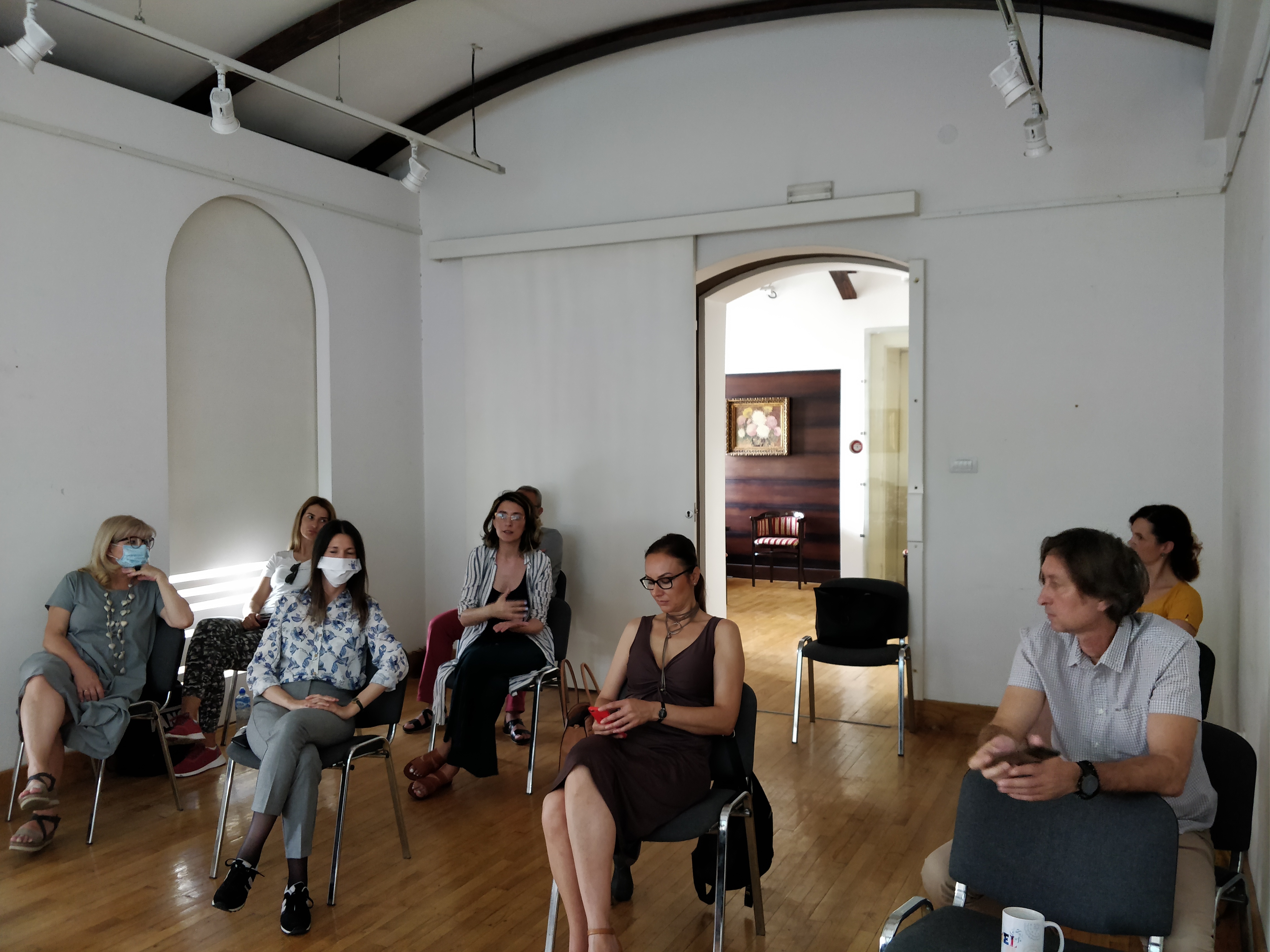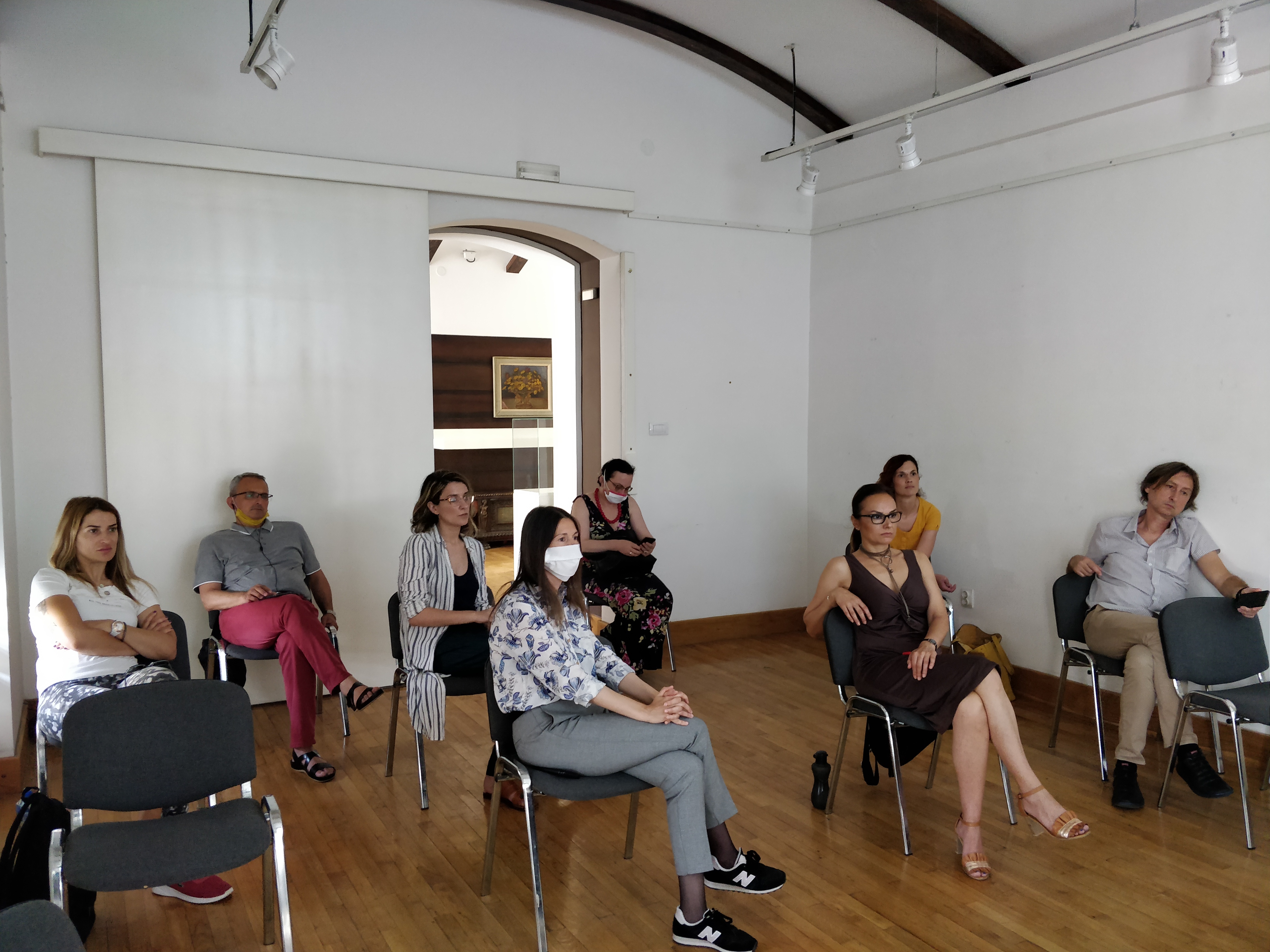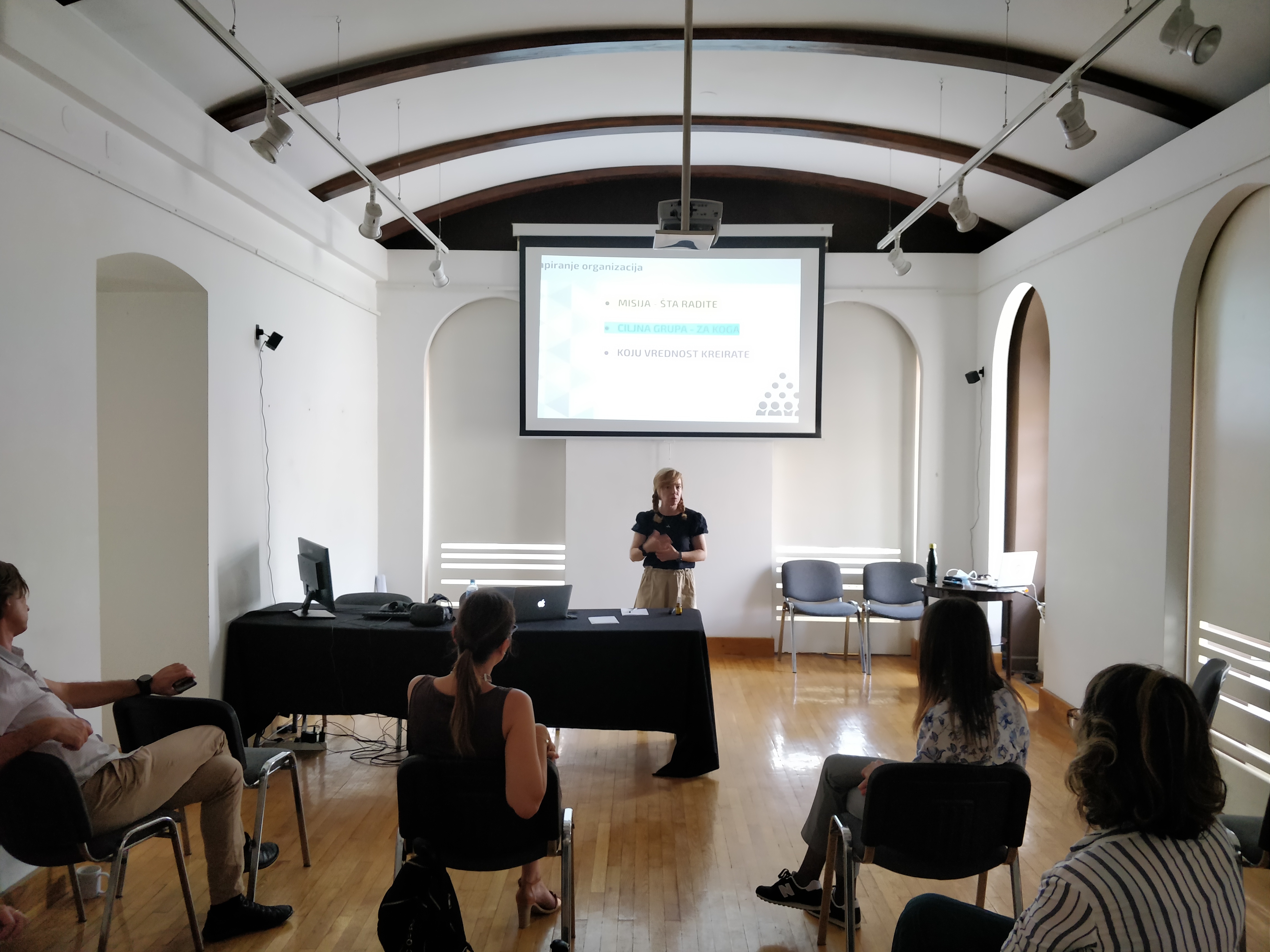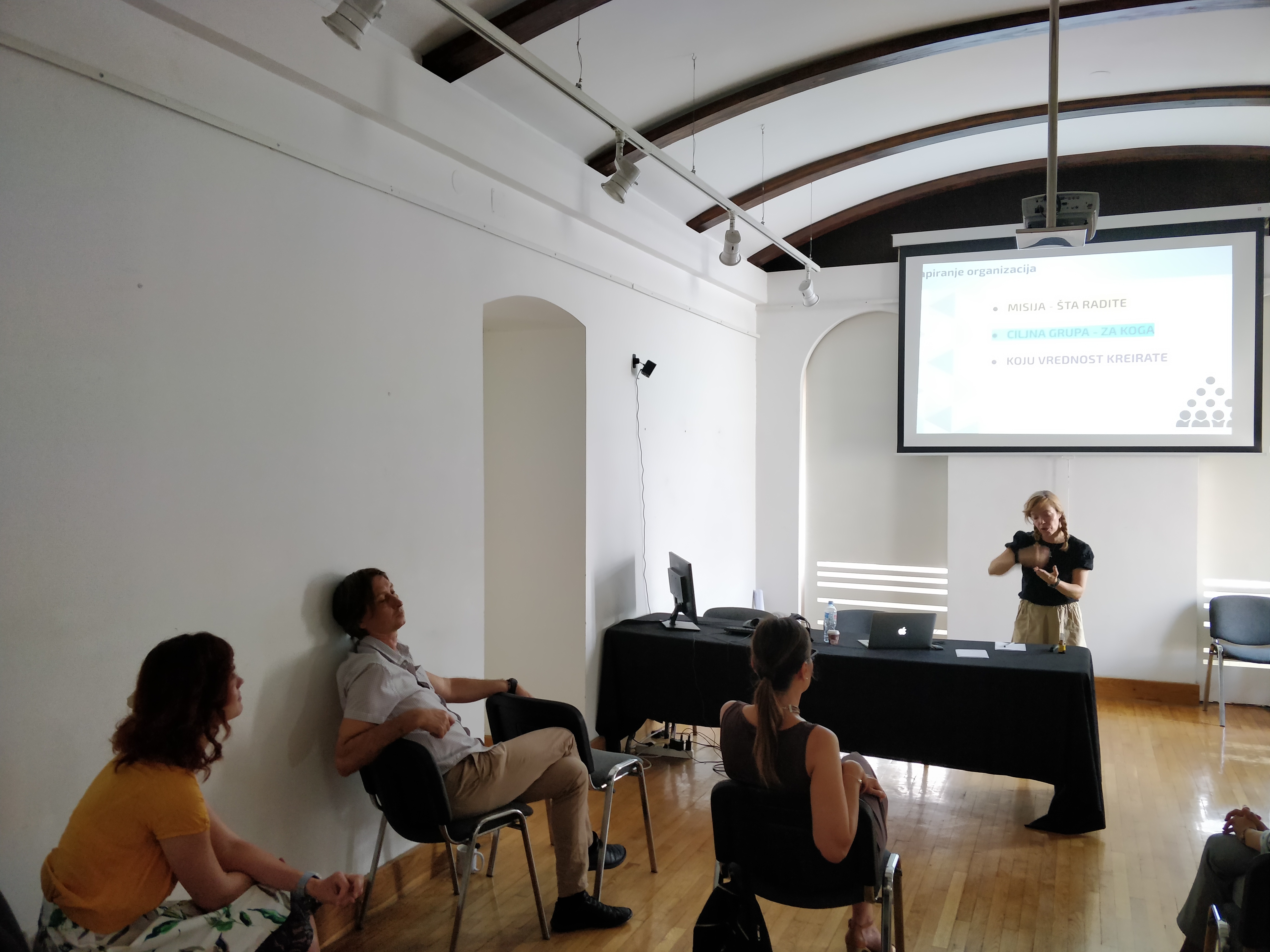
Networking strategies for cultural institutions in Serbia
Client: Creative Europe Desk Serbia
Year: 2020
Mentor/Trainer/Facilitator: Nana Radenković / Kristijan Šujević
Tasks of Nova Iskra Studio:
Workshop

Public sector institutions, especially those within the fields of arts and culture, are facing constant challenges and changes, not only in the relation to local circumstances but also in relation to the global ones.
Changes of values, development of technology and its impact on everyday life or shifts in needs and interests of audiences, are just some of the reasons that lead us to the conclusion that it is necessary to take on a different approach when rethinking and designing development strategies for the public sector institutions in the domains of arts and culture.
Within this year’s Creative Europe Forum2020, organized by the Creative Europe Desk Serbia, which took place in three cities – Valjevo, Sabac and Niš – the focus was put exactly on those challenges.
The program was designed in a way to encourage discussion and reflection on possible forms of action, as well as visions of development that will contribute to institutions and organizations in culture on their path to become the actors of much-needed changes and trends in their respective local environments.
In this program, the idea was to strengthen the capacity of actors in culture and to encourage the ambitions of the local environment, as well as to contribute to the promotion of well-balanced cultural development across Serbia.
Nova Iskra Innovation Lab was included in the part of the program dedicated to strengthening the capacity of organizations, and was aimed at strategic orientation of institutions and organizations in culture through the workshop – Prospects for the development of cultural organizations through international cooperation.
The workshop was attended by representatives of the National Museum of Šabac, the Šabac Library and the Šabac Cultural Center. The workshop focused on the potentials for networking at the local, regional and international levels, mapped-out good practice examples and analyzed specific needs of the local community when it comes to the domain of arts and culture.
The aim was to introduce employees of cultural institutions to alternative methods (such as the “user-centered“ method) that may be used in creating networking strategies, as well as for designing program activities that focus on audiences and their specific needs.




